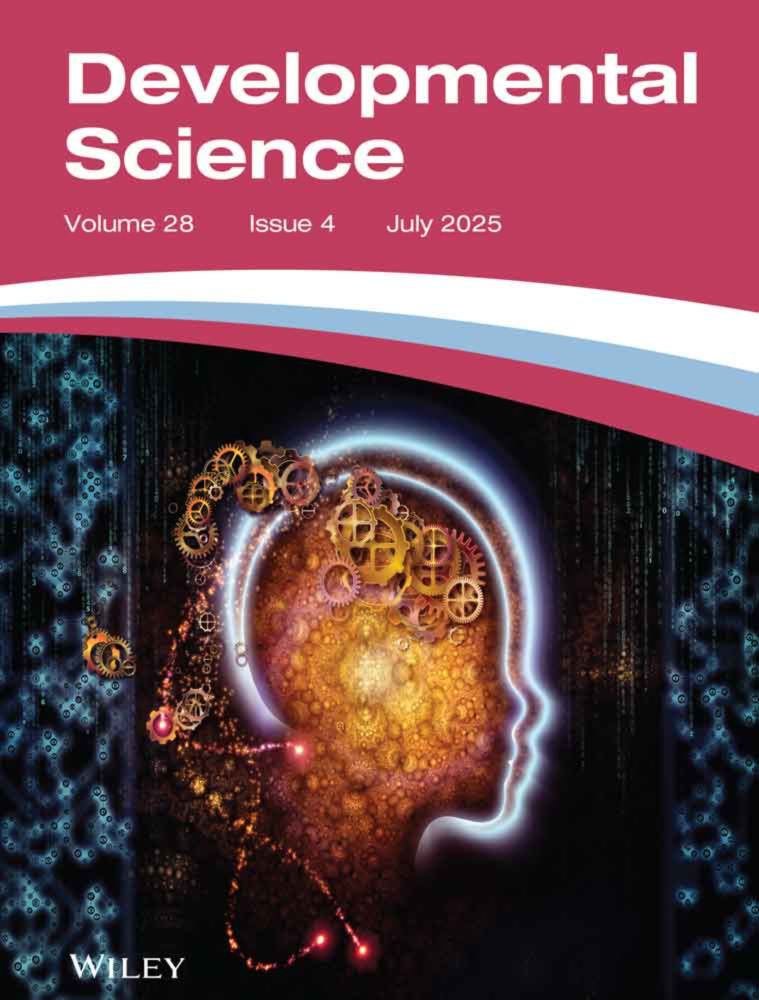I discovered incredible work on menstrual education in China by Ying on LinkedIn, and then realized she's an alum from our own department! Reached out immediately to get her on the podcast. I learned so much and was so inspired! Hope you can enjoy it as well!
04.12.2025 18:13 — 👍 2 🔁 0 💬 0 📌 0
oh I didn't know about this! Thank you for letting me know!
23.10.2025 16:31 — 👍 2 🔁 0 💬 0 📌 0
thank you :)
23.10.2025 16:05 — 👍 0 🔁 0 💬 0 📌 0
thank you!
22.10.2025 22:46 — 👍 0 🔁 0 💬 0 📌 0
9/
Special thanks to @thomastalhelm.bsky.social for many thoughtful feedback and conversations. Also thanks to suggestions from @nicholascoles.bsky.social , Xueguang Zhou, Hazel Markus, and members of Culture Lab :)
22.10.2025 17:18 — 👍 3 🔁 0 💬 0 📌 0

8/
So, rice theory is a cool idea. But we’re not so sure these two farms give us a clean causal test.
Thanks for reading! And now… I’m craving rice snacks. Strongly recommend these, 10/10 🍘
(It says Milk but it's 56% rice)
22.10.2025 17:18 — 👍 5 🔁 1 💬 1 📌 0
7/
And the two farms weren’t identical socially, either. Lianhu (rice) had stronger military roots. You can even glimpse their cultural difference in how they kept records. Lianhu documented every single year; Qukou only every five. At least in the farm chronicles.
22.10.2025 17:18 — 👍 2 🔁 0 💬 1 📌 0

6/
What I found was surprising: both farms actually grew both rice and wheat. Sometimes in similar proportions.
By the 1970s (when most participants were born), Lianhu, the “rice” farm, was mostly growing dryland crops.
(Yes I did enter all the datapoints from the book and ggplot it)
22.10.2025 17:18 — 👍 5 🔁 0 💬 1 📌 0

5/
Beyond stats, there’s also history. I got curious about the farms themselves and hunted down the primary sources: the farm chronicles.
Thanks to interlibrary loan, Harvard mailed me two actual physical copies across the country (!). TWICE (😅sorry I'm slow and they won't extend my loan).
22.10.2025 17:18 — 👍 3 🔁 0 💬 1 📌 0

4/
We found only one of the three psychological measures (Self-Inflation) was robust, showing consistent results across all specifications. The others were sensitive to the specification of the model.
22.10.2025 17:18 — 👍 0 🔁 0 💬 1 📌 0
3/
Consistent with rice theory, the rice farmers turned out to be more “collectivistic” than the wheat farmers.
But we took a closer look. Since the analyses weren’t preregistered, we decided to test robustness using a multiverse analysis: rerunning all possible versions of their models.
22.10.2025 17:18 — 👍 0 🔁 0 💬 1 📌 0

2/
In Talhelm & Dong (2024), they picked a fascinating case: two state farms in China, one designated for rice, the other for wheat. Young people from the cities were basically randomly assigned to these farms. So voilà, quasi-random rice vs. wheat farming!
22.10.2025 17:18 — 👍 0 🔁 0 💬 1 📌 0

1/
Alright, this one’s been sitting in my drawer for a year now, after @mcxfrank.bsky.social and I got turned down for a public commentary.
But before I forget about it completely, here’s the preprint:
Can we harvest insights for rice theory from two state farms in China?
osf.io/preprints/ps...
22.10.2025 17:18 — 👍 36 🔁 13 💬 3 📌 2
thank you Mike!!
27.05.2025 06:09 — 👍 1 🔁 0 💬 0 📌 0
Thank you Caroline :)
13.05.2025 16:44 — 👍 0 🔁 0 💬 0 📌 0
This of course did not mean that children were not getting better with age — but we hope this (somewhat) surprising finding can highlight the need for more robust reporting standards and more large-scale multi-laboratory projects (like ManyBabies!) (9/9)
12.05.2025 17:50 — 👍 5 🔁 0 💬 0 📌 1
We investigated each hypothesis, but found none of these explained the lack of age-related growth in most datasets! (8/9)
12.05.2025 17:50 — 👍 2 🔁 0 💬 1 📌 0
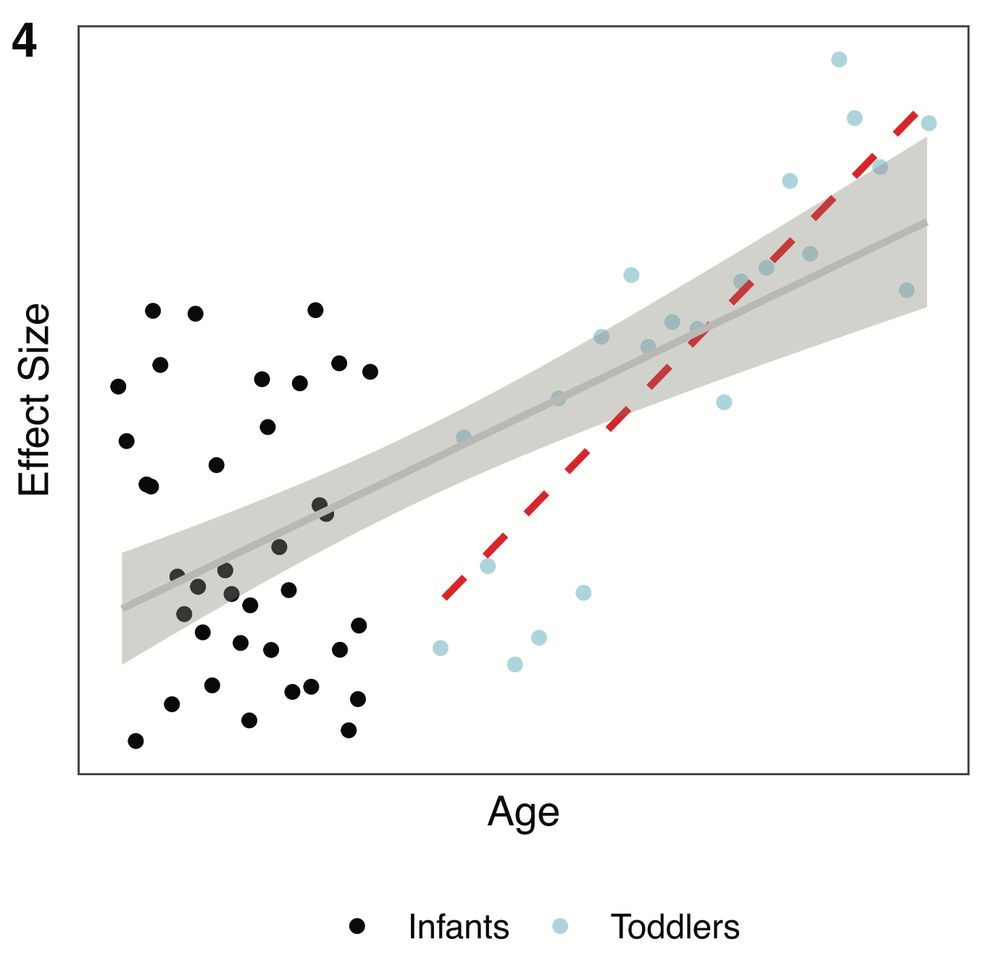
Hypothesis 4: Positive growth only after infancy. Maybe developmental changes were only observable after some age (e.g. in toddlerhood??) (7/9)
12.05.2025 17:50 — 👍 2 🔁 0 💬 1 📌 0
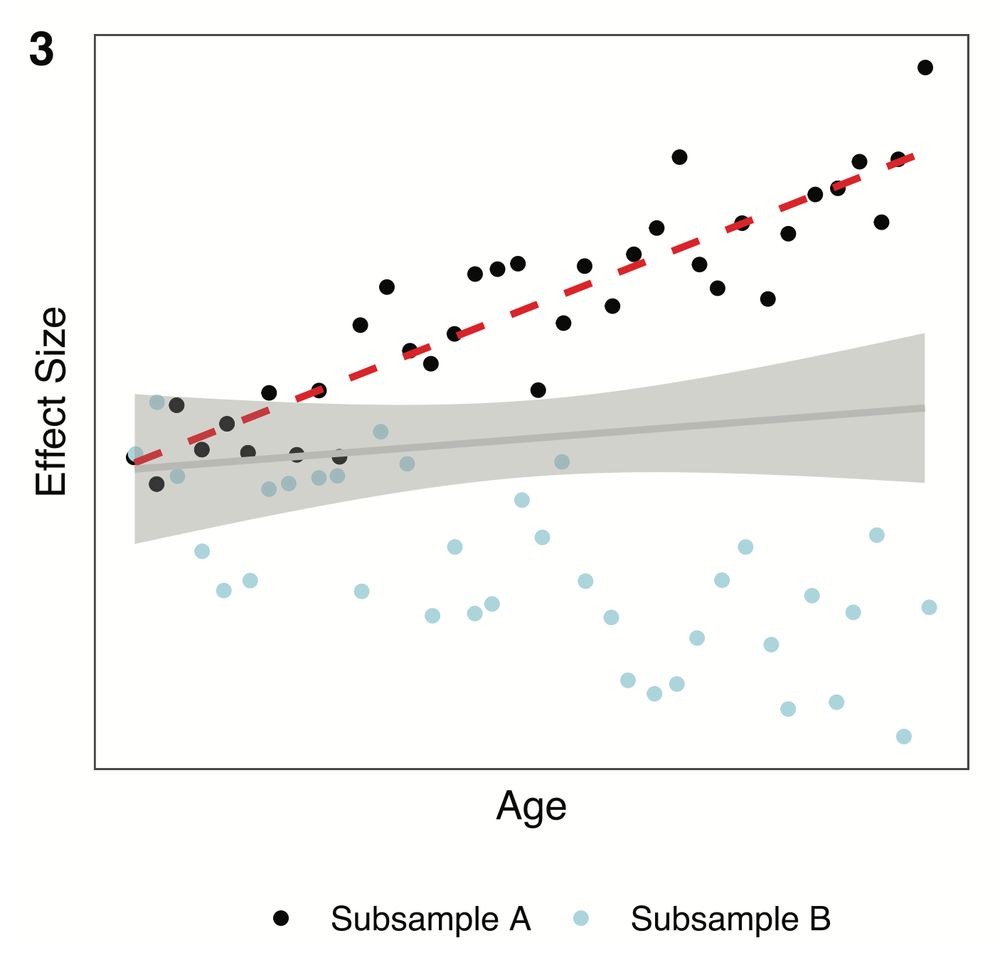
Hypothesis 3: Change in only a subset of conditions. Maybe developmental changes were only supposed to be observed in some specific conditions? (6/9)
12.05.2025 17:50 — 👍 2 🔁 0 💬 1 📌 0
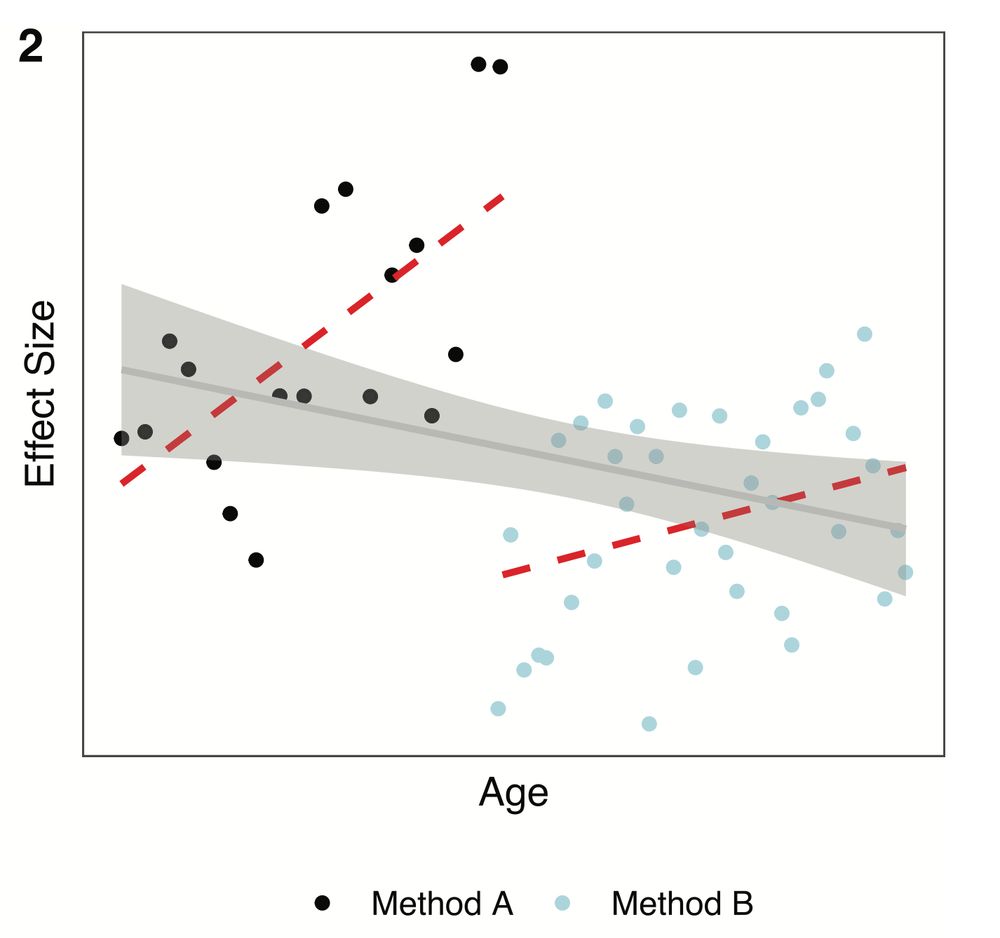
Hypothesis 2: Methodological adaptation for older infants. Maybe studies testing older infants were using more difficult methods? (5/9)
12.05.2025 17:50 — 👍 2 🔁 0 💬 1 📌 0
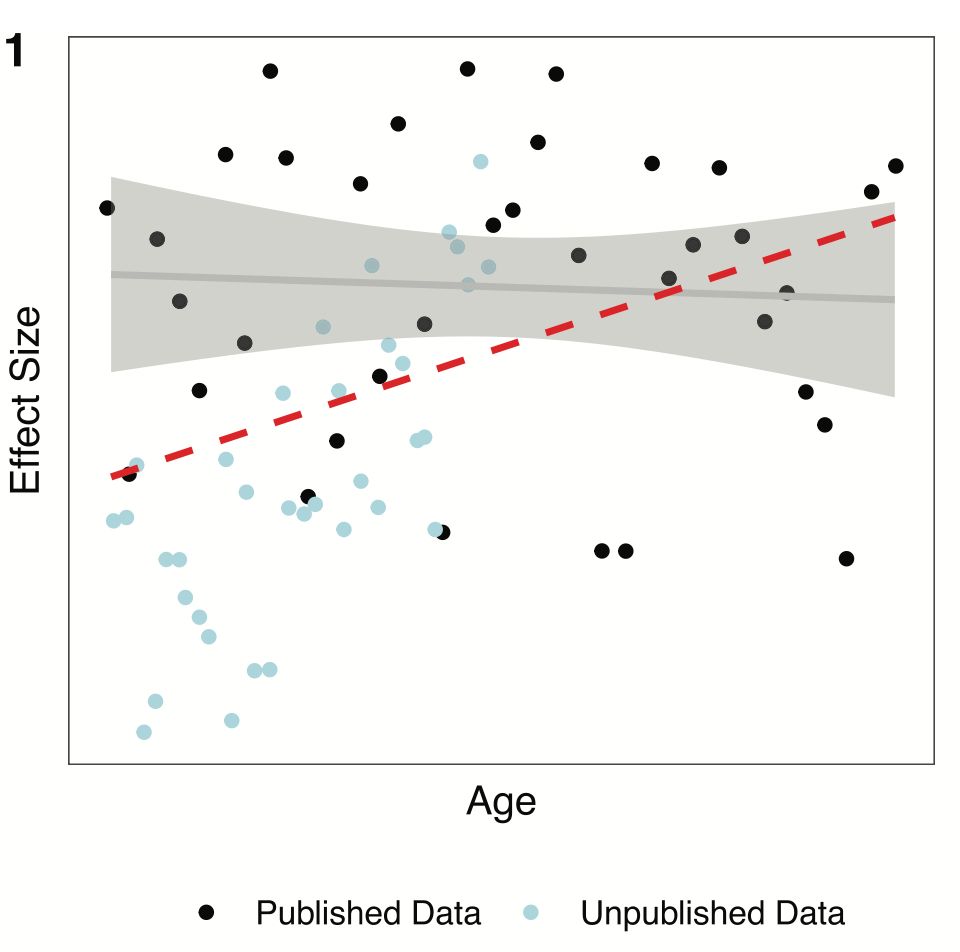
Hypothesis 1: Age related selection bias against young children. Maybe studies testing younger infants were more likely to have publication bias? (4/9)
12.05.2025 17:50 — 👍 2 🔁 0 💬 1 📌 0
That’s very strange! Shouldn’t the children get better at the tasks as they get older? We came up with 4 hypotheses that can potentially explain the flatness of these curves (3/9)
12.05.2025 17:50 — 👍 2 🔁 0 💬 1 📌 0
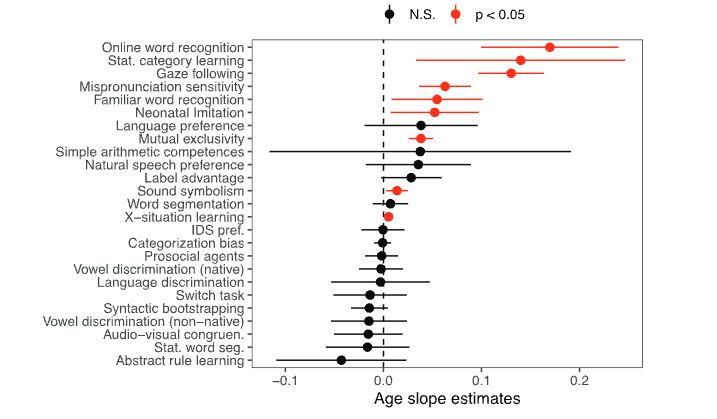
To our surprise, we found that for most phenomena, there was no (linear) age effect at all — meaning that as children get older, the effect sizes in those tasks did not get larger! (2/9)
12.05.2025 17:50 — 👍 3 🔁 1 💬 1 📌 1

MetaLab
Developmental psychology has long studied how constructs change with age, but what are the shapes of these changes? We investigated this question by conducting a meta-meta-analysis over 25 developmental meta-analyses retrieved from metalab: langcog.github.io/metalab) (1/9)
12.05.2025 17:50 — 👍 5 🔁 0 💬 1 📌 0
6/
We’ll be at CogSci 2025 presenting this work!
Come find us in San Francisco. Happy to chat about all things looking time paradigms :)
08.05.2025 04:03 — 👍 1 🔁 0 💬 0 📌 0
5/
Why does this matter?
Habituation and dishabituation are often treated as separate cognitive predictors.
But our findings suggest they may tap into a shared process.
08.05.2025 04:03 — 👍 3 🔁 0 💬 1 📌 0
4/
Infants dishabituated more when the stimuli were simpler, and younger infants showed greater dishabituation overall.
08.05.2025 04:03 — 👍 1 🔁 0 💬 1 📌 0
3/
Key finding:
Individuals who habituate faster also show stronger dishabituation, in both infants and adults.
For adults, greater volatility in looking behavior during habituation (often seen as noise) also predicted stronger dishabituation.
08.05.2025 04:03 — 👍 2 🔁 0 💬 1 📌 0
2/
We analyzed large-scale looking-time data across the lifespan:
– Infants (N = 1986)
– Preschoolers (N = 33)
– Adults (N = 186)
This allowed us to test how attention unfolds over development—and what predicts its recovery when novelty appears.
08.05.2025 04:03 — 👍 3 🔁 0 💬 1 📌 0
The official Stanford Psychology podcast!
Founded by Eric Neumann & Anjie Cao. Every episode features a leading researcher discussing their most recent work.
Website: stanfordpsychologypodcast.com
PhD student at Umass Boston in the Early Minds Lab! Studying working memory and cognitive effort in all ages, with Zsuzsa Kaldy and Erik Blaser
I'm an associate professor of behavioral science at the University of Chicago Booth School of Business. I also founded Smart Air, a social enterprise dedicated to making low-cost air purifiers and teaching people how to build their own.
teaching faculty @ UPenn
Ph.D. in Cognitive Science from UC Irvine w/Megan Peters
science writer (words in Scientific American, Science News, Nat Geo and other outlets)
studied phil + neuro + psych @ UChicago - she/they
norabradford.com
Incoming UCSD/SDSU Clinical Psych JDP student | Social Development and Wellbeing Lab @ Northeastern | NSF GRFP | fMRI, adolescence, peer dynamics, irritability 🧠
PhD @Stanford working w @noahdgoodman and research fellow @GoodfireAI
Studying in-context learning and reasoning in humans and machines
Prev. @UofT CS & Psych
PhD Candidate at Northwestern and Education Research Intern at WestEd. Cognitive psychology, spatial cognition, measurement & assessment.
linktr.ee/kileymckee
A nonprofit, nonpartisan, legal and advocacy 501(c)(4) organization. Visit our site for more about us and our affiliated organization, the ACLU Foundation.
Senior Fellow at the American Immigration Council. Commenting generally on immigration law and policy. Retweets =/= endorsements, views are my own.
Developmental scientist and educator at Stanford. Interested in learning, brain development, adolescence, care & caregiving, and mutual aid.
Based in Los Angeles
Cognitive Science at Aarhus Uni. Curious about social interactions, symbolic behaviors, and meta-science. Focus on stats, computational modeling, machine learning, complex systems, language, exp semiotics and neuropsychiatric conditions. He/They.
postdoc at MIT (CoCoSci lab) & JHU (LIU lab) | cog dev, causal inference, and surprise | cat person | she/her
Asst Prof at Johns Hopkins. Dog person. A woman who is up to something. www.liulaboratory.org
developmental scientist. not-that-kind-of-doctor. coffee lover. cat person. parent. she/her.
Cognitive scientist at Yale
Professor studying origins of concepts @CarnegieMellon; Brain development, cognition, evolution, math & logic; Primate Portal
@TIME 2017 Silence Breakers; she
Science Homecoming
@sciencehomecoming.bsky.social
Metascientist @ uidaho. I work at the intersection of behavioral sciences, statistics, and philosophy. Love thinking and talking about science. Post lots of cat and food pics. Allergic to unsolicited advice.
Very (un)serious person who, occasionally, makes friends along the way… (also an addiction researcher/psychologist)
Cognitive scientist studying how morality, happiness, and other subjective magnitudes can be quantified.
Postdoctoral fellow at Yale University
https://www.vladchituc.com/












